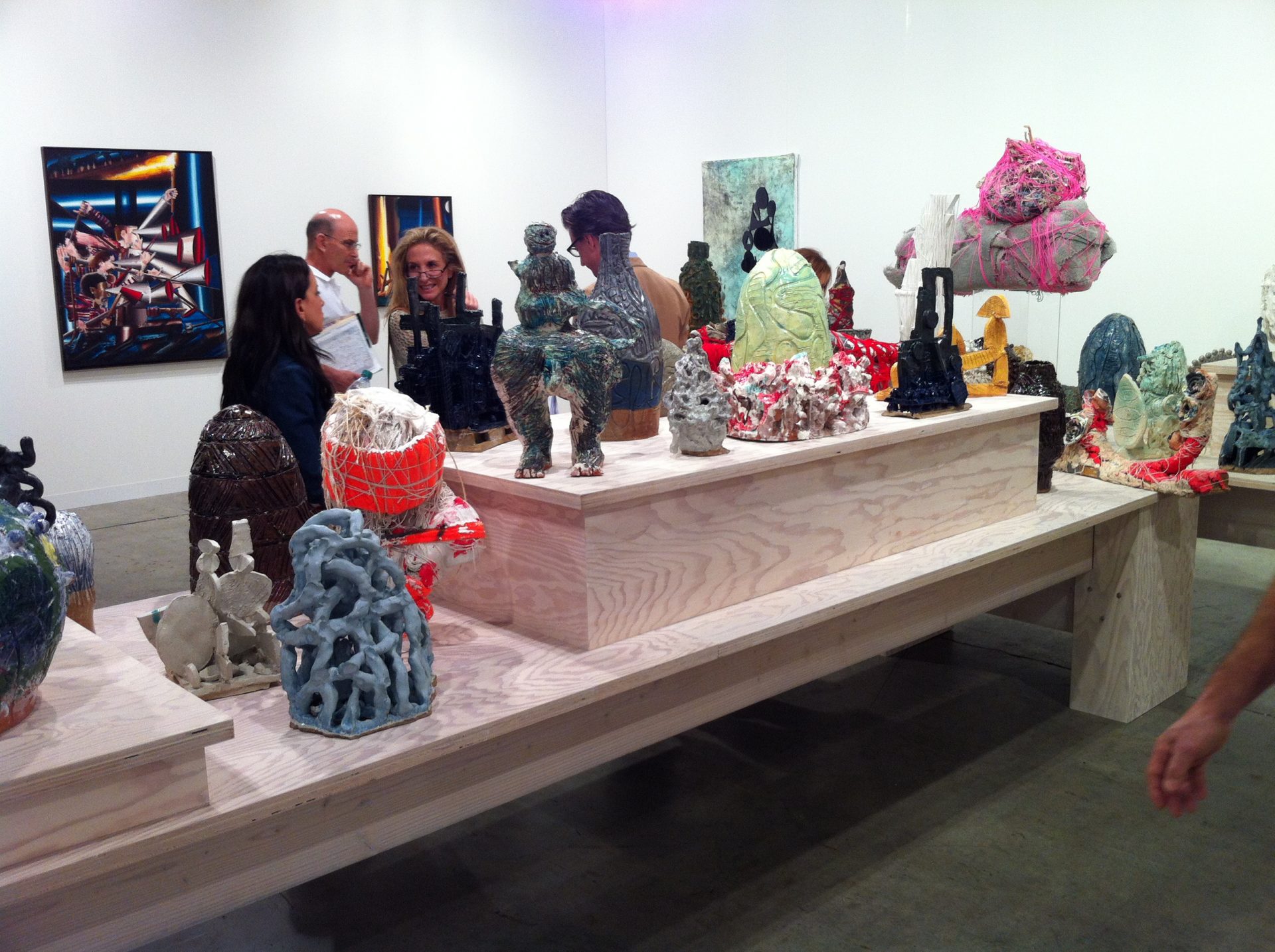One of the biggest disappointments of Art Basel Miami Beach had to be the Flagler Island project. Why? After being invited (invite only), with a guest if one so chose, and fighting through the HELL that is Miami-to-Miami Beach rush hour traffic, we are all informed that the 4 p.m. starting time was moved several hours earlier and that no more invitees would be allowed on the island. A phone call to those involved with the project resulted in the phone call abruptly being terminated as a result of the apparent chaos at their end of the line. The question we have for LAND, with them having a staff did that not allow them to find out the restrictions and logistics before the announcements were sent out so that invitees could arrive in ample time and being set up for a frustrating afternoon?
It is, however, good to note that this is one of the available islands in Biscayne Bay on which cultural projects can take place. It will be used again in the near future. Miami Art Exchange, for one, has art projects already in the works.
Once on This Island, a D.I.Y. Art Show:
“The curator Shamim Momin and a group of artists mounted a one-afternoon exhibition on Flagler Memorial Island off Miami Beach.”
Oscar Hidalgo for The New York Times
A performance with poles, staged by Brody Condon as part of the one-day show on Flagler Memorial Island.
By RANDY KENNEDY
Published: December 5, 2010
“Flagler Memorial Island, a tiny oval of sand and coconut palms in Biscayne Bay, is a strange appendage to the city of Miami Beach. It is a municipal park with no means of access unless you own a boat or have friends who do. It is artificial, like the overdeveloped Venetian Islands nearby, but remains uninhabited and a little wild, with no electricity or facilities. It is home to a big white obelisk, but almost no one here seems to know what the monument honors or goes to visit it.
The rules as set out by Miami Beach — which wants to use the island for cultural projects but also to protect its unkempt beauty and ecosystem — were not exactly art-world friendly. Work could be moved into place no earlier than the morning of the show; none of it could alter the island or damage its plant life; no more than 300 people at a time could come out to the island; and all evidence of the show’s existence had to be gone by the next morning. In addition, during the setup and the exhibition, the island would remain open as a public park if anyone wanted to visit for that purpose, and some did.”
(Via NYT > Art & Design.)

